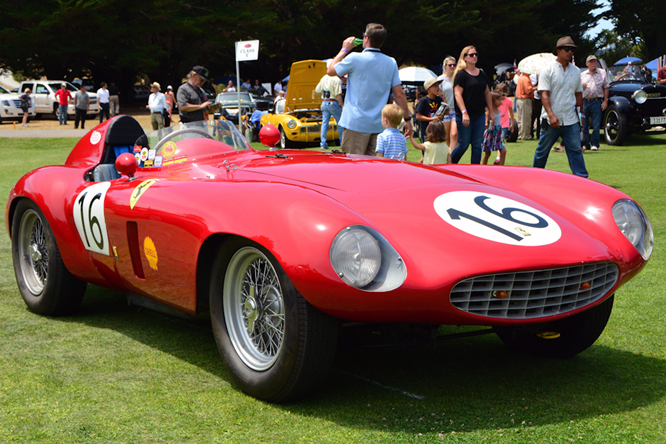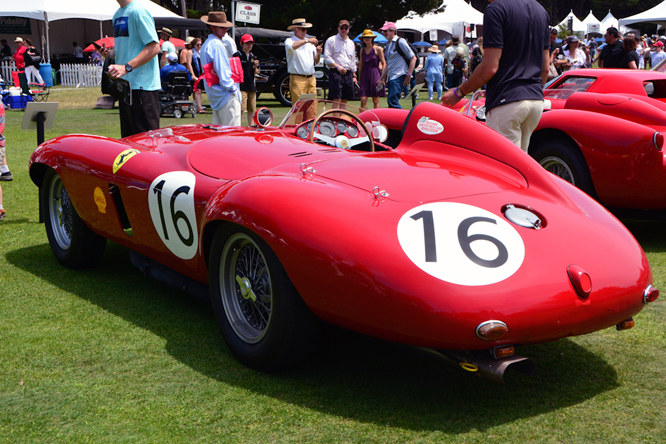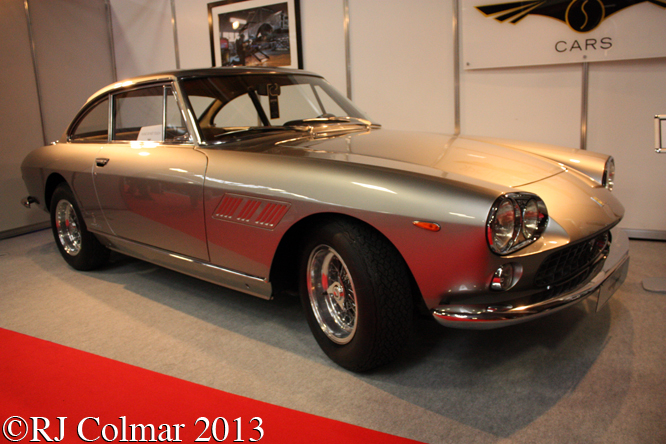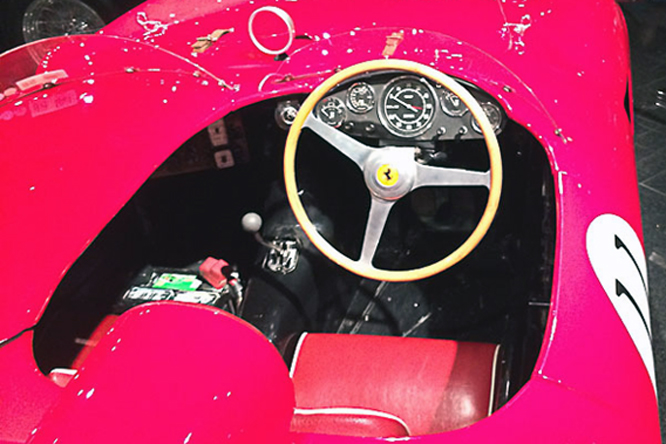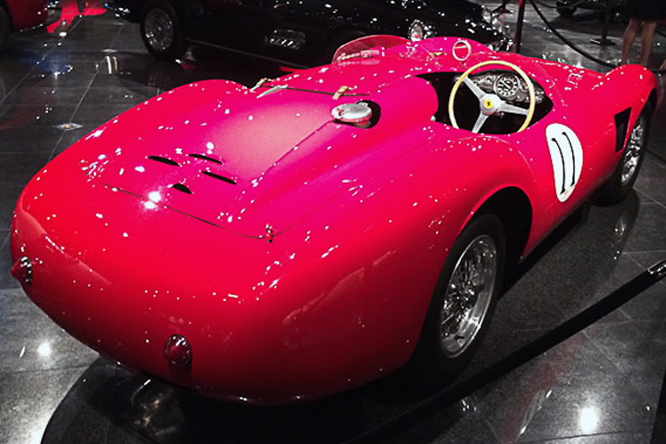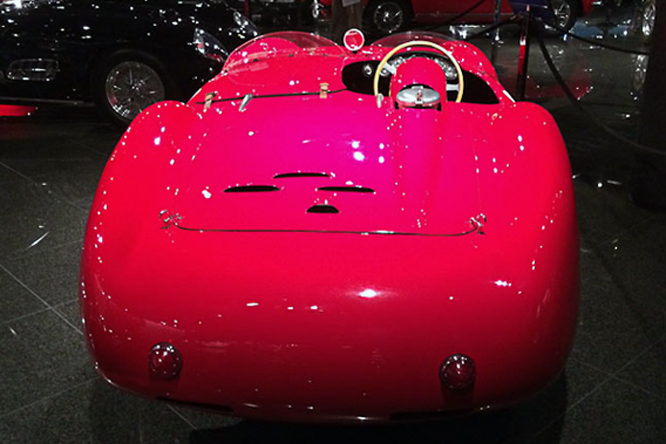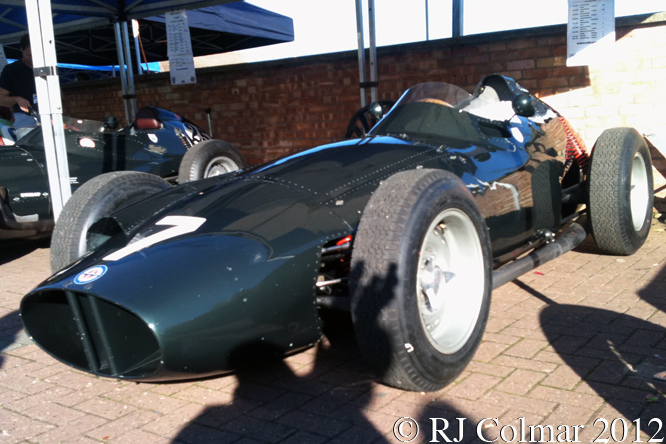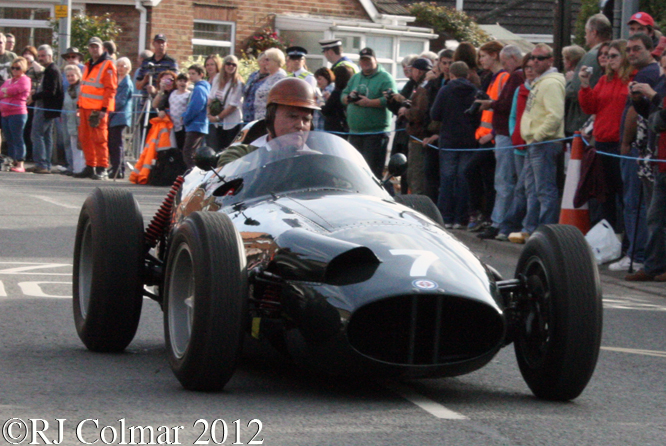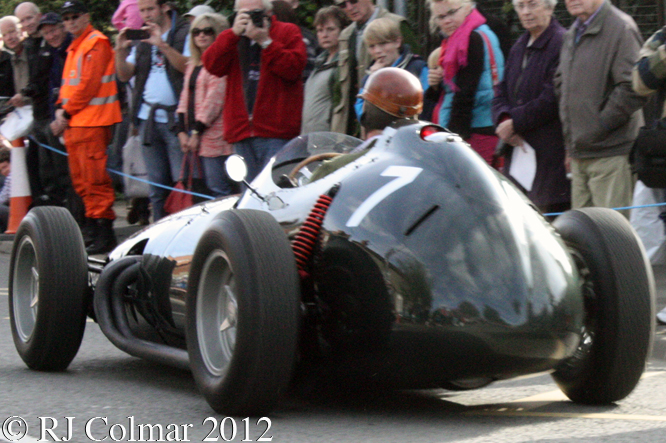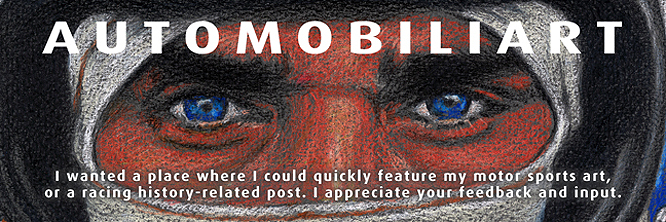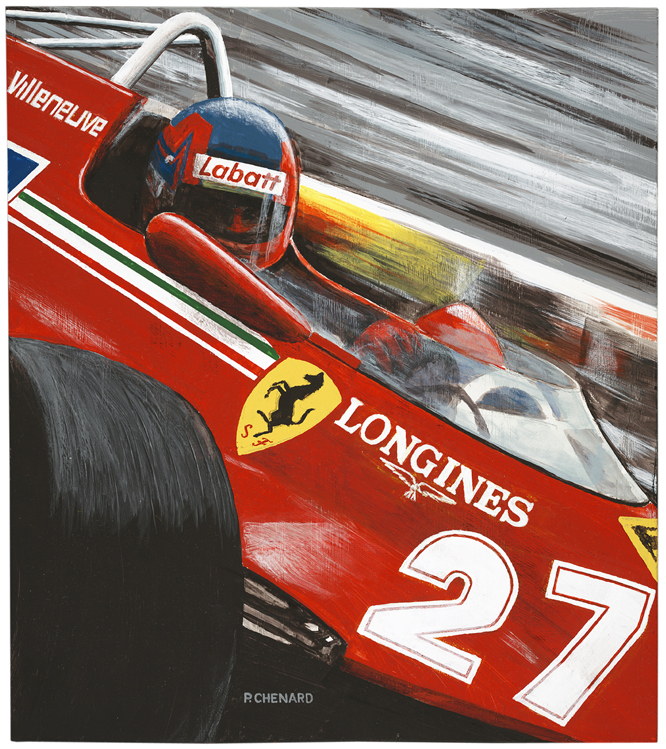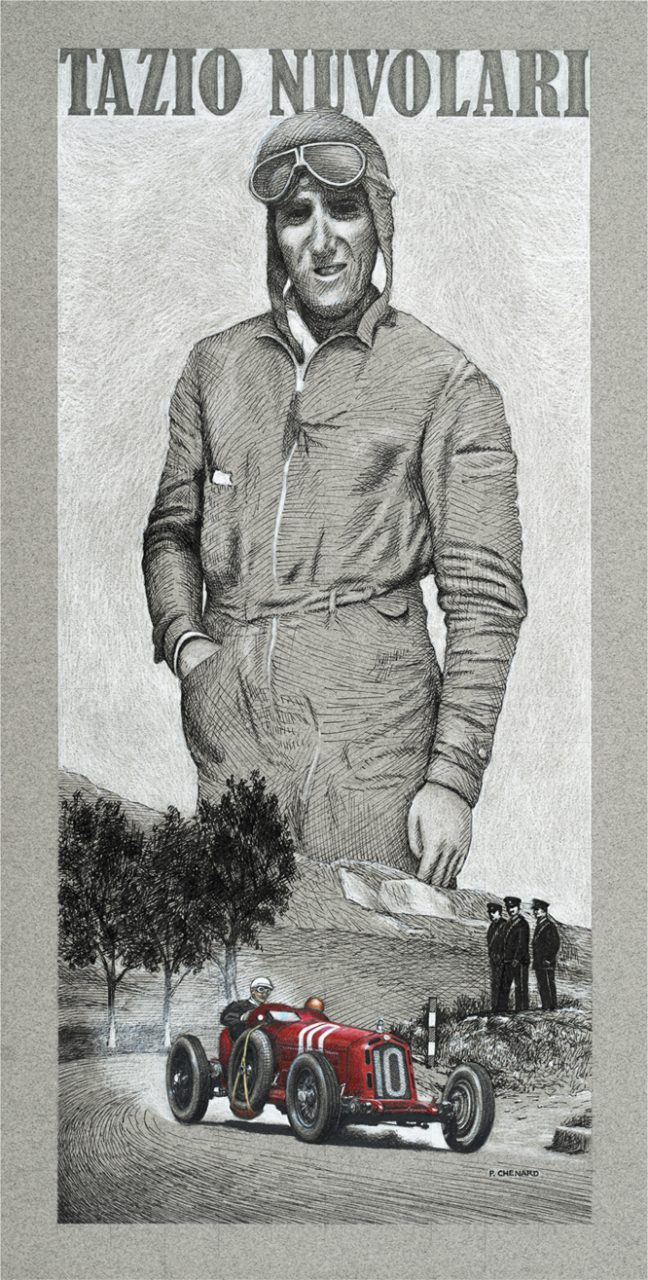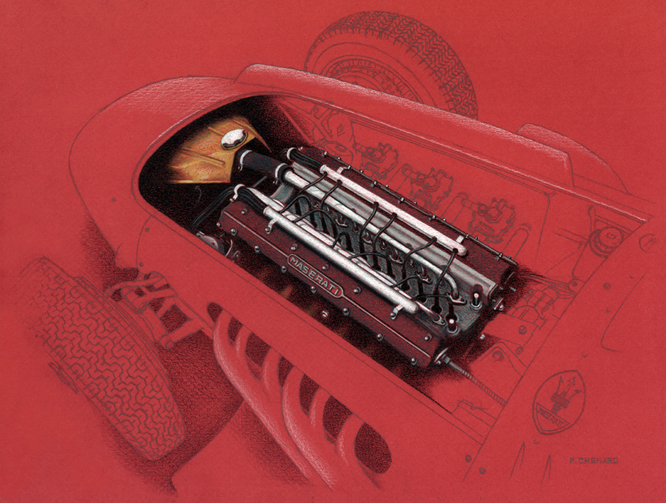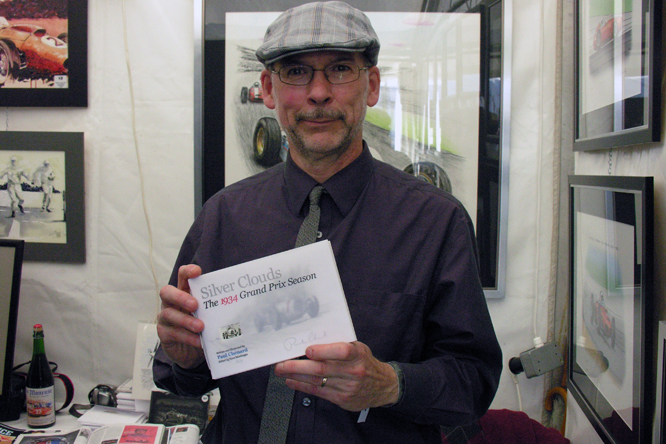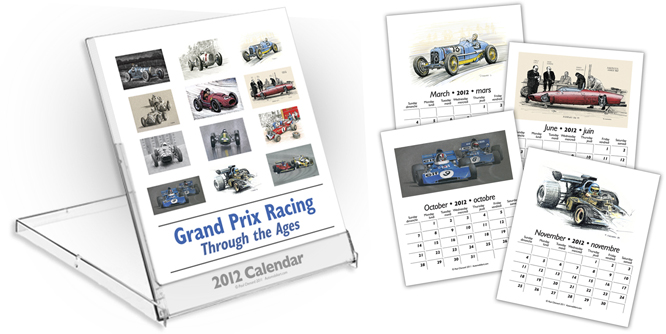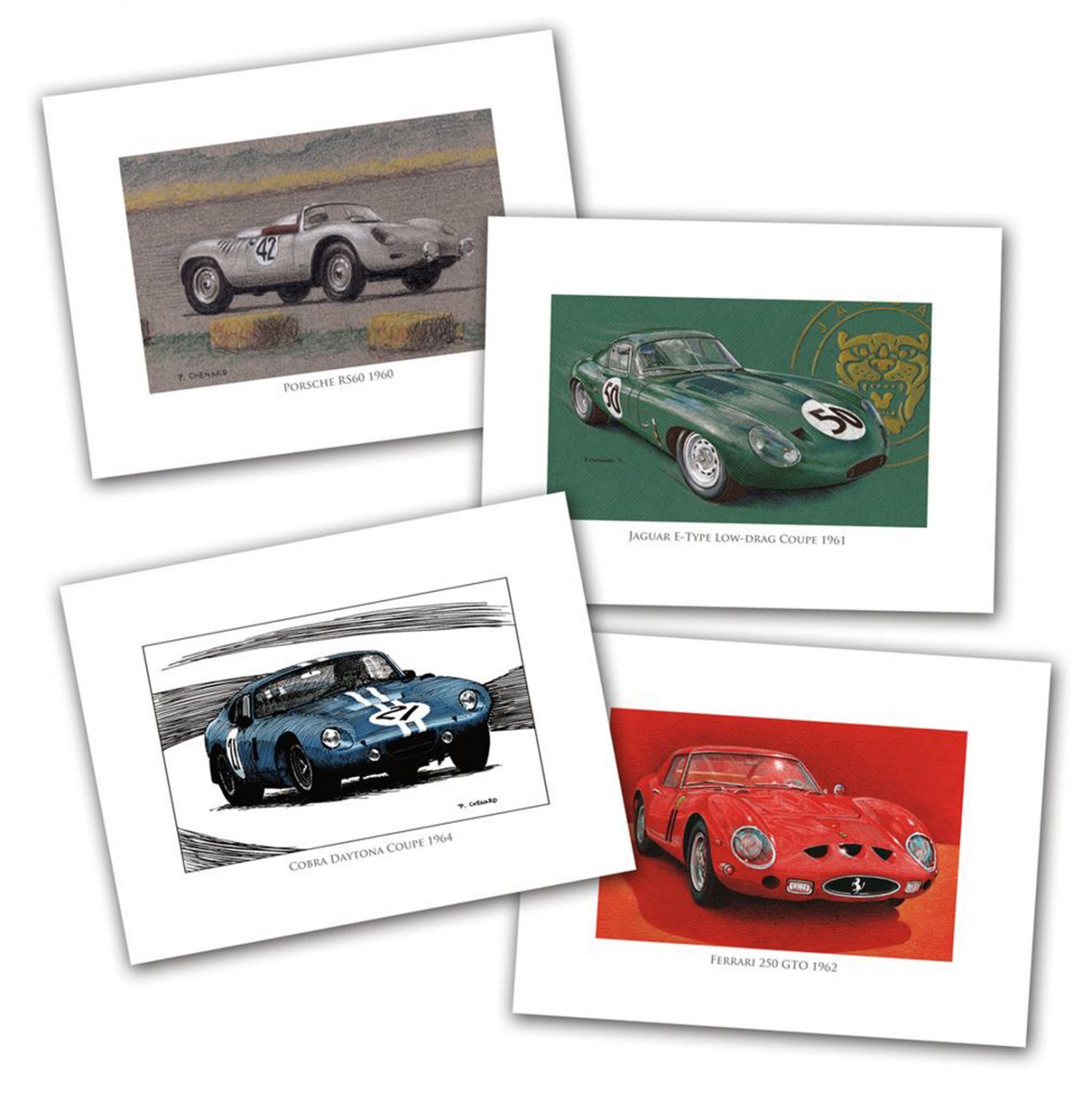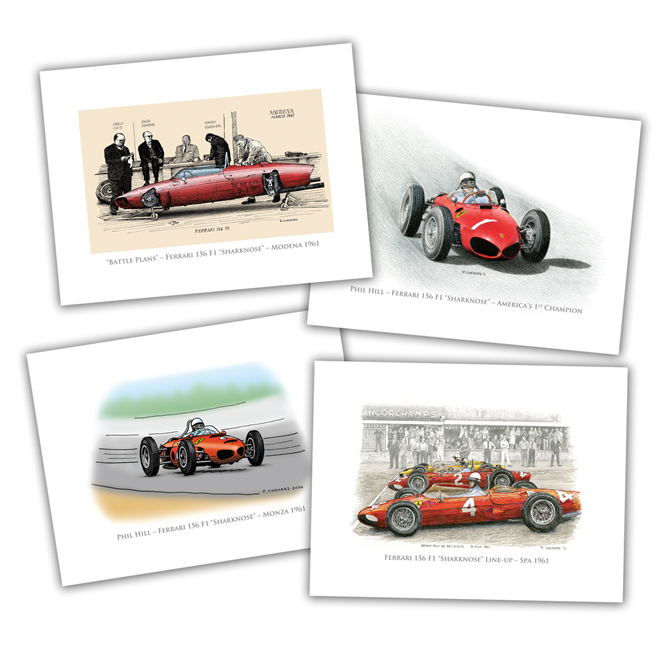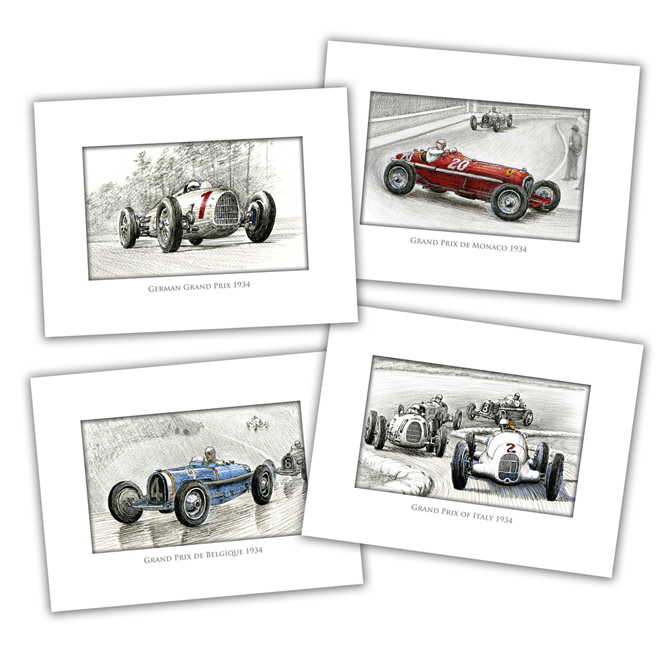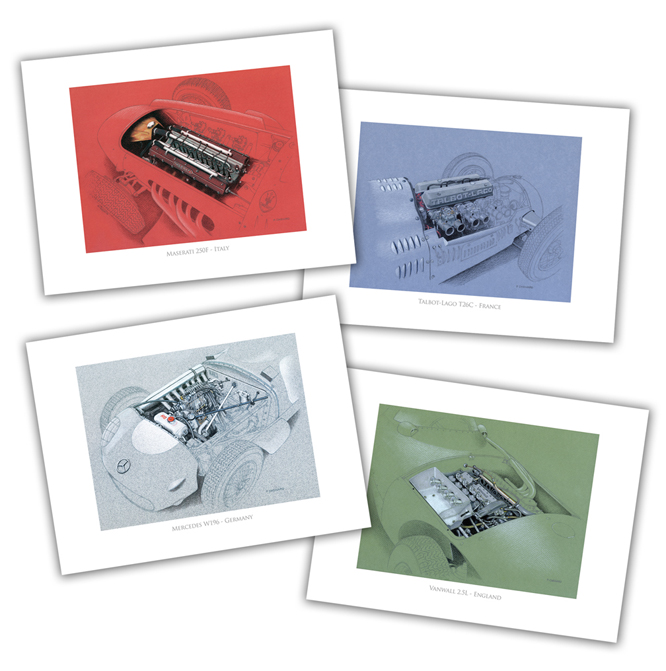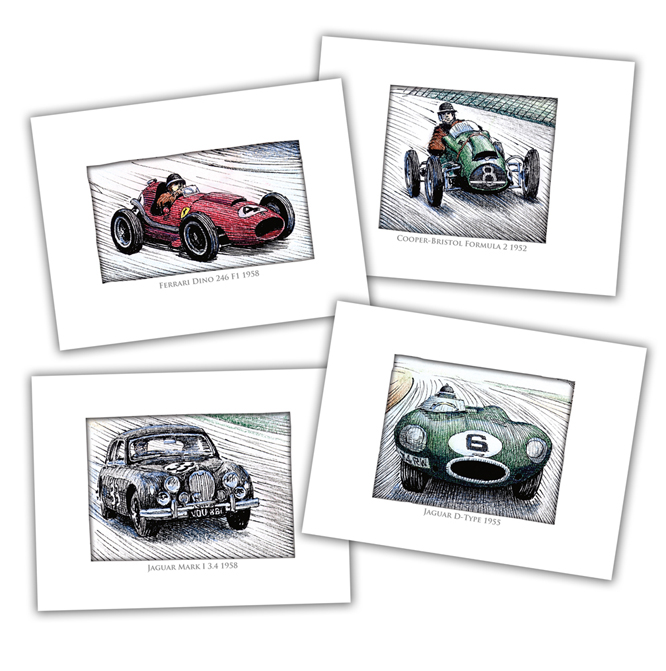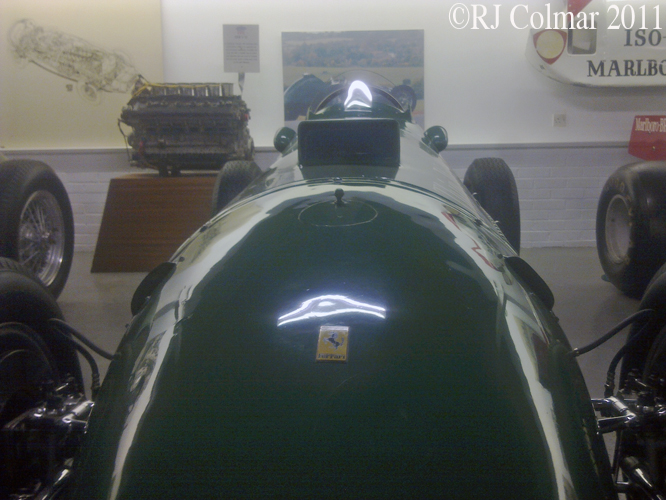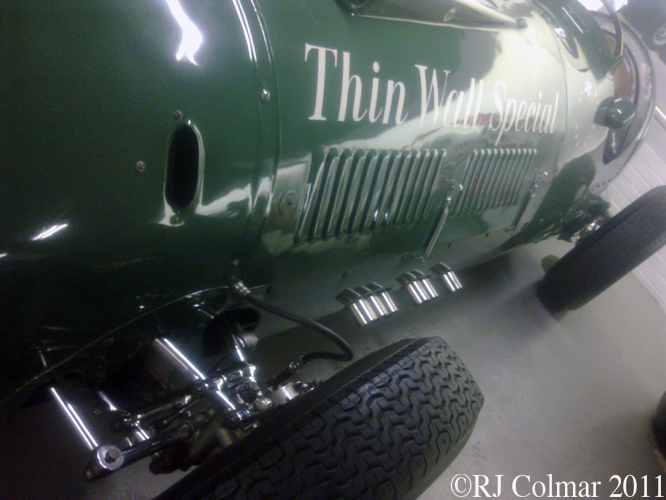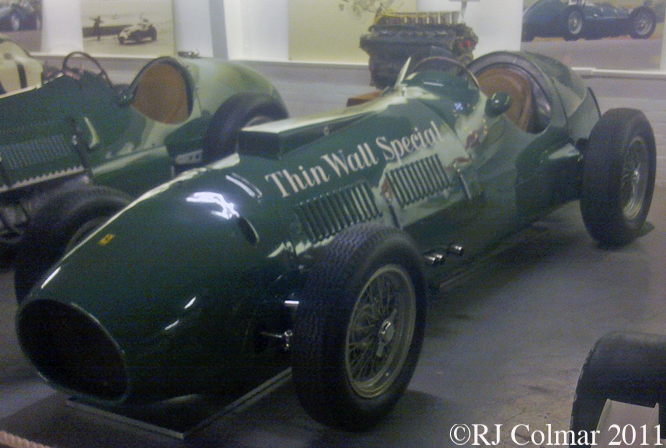Keen to project a successful image through participation in Formula one with it’s new 2.5 litre / 152 cui engine regulations Lancia commissioned Vitorrio Jano to design a new challenger in 1953.
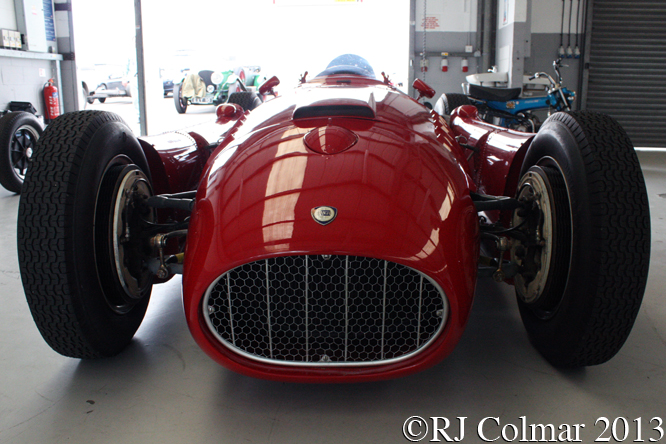
Over the development period of the car several different noses were used above is the original short nose.
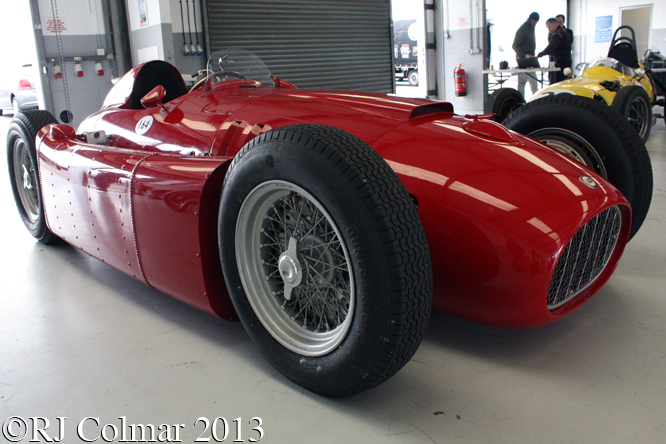
Jano paid a lot of attention to how the weight was to be distributed in his new design which led to the D50’s most distinctive the pannier tanks between the wheels that did away with the need for a rear fuel tank which was de rigueur for contemporary formula one cars.
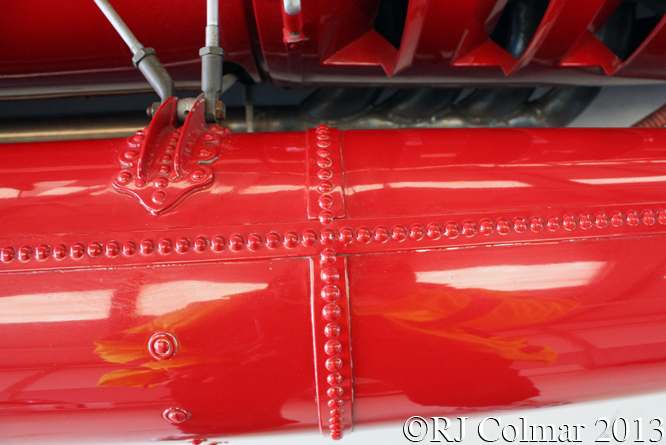
Jano selected a compact 90° V8 motor configuration that was offset 12° from front right to rear left. The motor featured twin plugs per cylinder produced around 260 hp. Unusually for the time the motor also functioned as an integral stressed member of the space frame chassis.
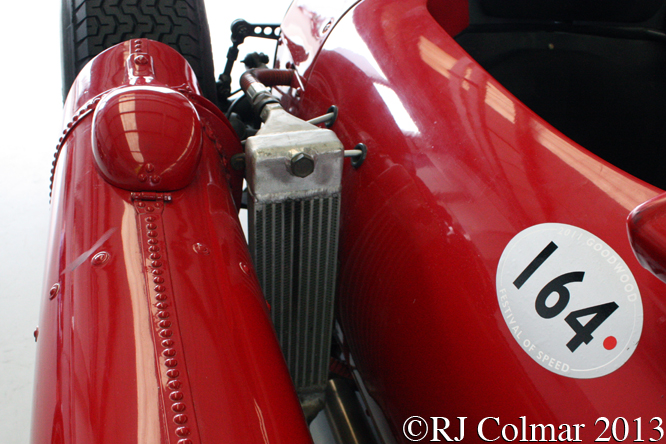
The car also featured a gearbox that was transversely mounted into the rear axle. The cooler for the transmission unit is seen just ahead of the rear axle between the panier tank and the rest of the chassis.
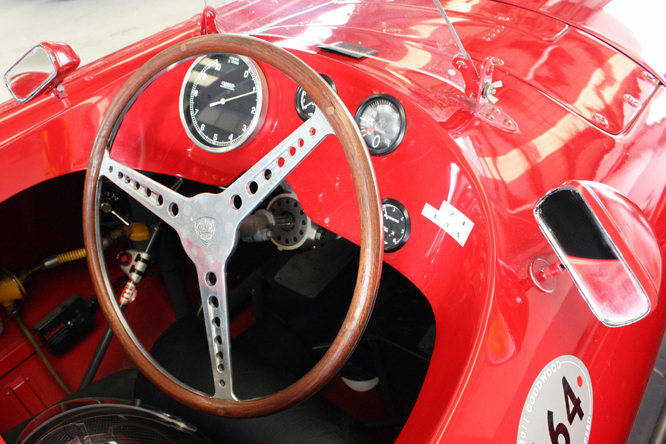
1952 and 1953 double World Champion Alberto Ascari and Italy Luigi Villoresi drove the D50’s on their first appearance in the World Championship in the last race of the 1954 season at the Spanish Grand Prix held on the Pedralbes street circuit in Barcelona. After qualifying 1st Ascari led for three laps before retiring with clutch problems on lap 10, Villoresi started 5th and retired after two laps with brake issues.
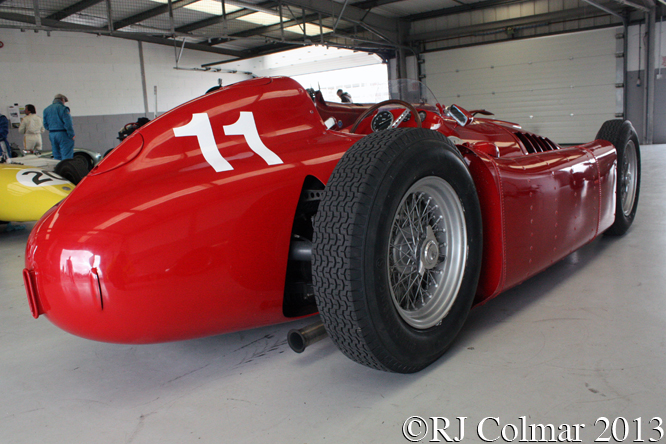
Lancia entered three cars in the 1955 Argentinian Grand Prix for Ascari who started from second and retired after an accident on lap 22, Villoresi qualified 11th and again only lasted for two laps before his car retired with a fuel leak. Villoresi replaced Eugenio Castellotti who had started 12th only to be involved in an accident on lap 35 from which the 3rd Lancia did not recover.
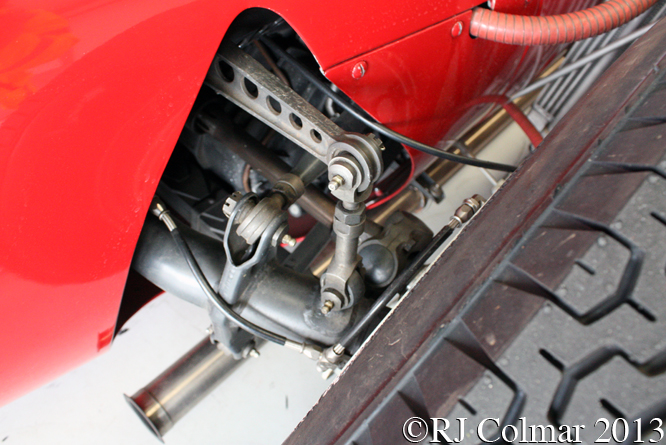
At Monaco Ascari again qualified 2nd but his car famously ended up in the harbour on the 81st lap which he survived, only to die the following week testing a Ferrari. Castellotti qualified 4th and finished 2nd, to Maurice Trintignant in the Ferrari 625A I looked at last week, while Villoresi qualified 7th and finished 5th one lap down. Monaqasque Louis Chiron drove a forth D50 Lancia from 19th on the grid to 6th 5 laps down.

Castellotti started on pole in Belgian Grand Prix but retired on lap 16 with gearbox problems on the Scuderia Lancia teams final appearance. At this point Lancia ran into financial difficulties and the company ended up in the hands of the Pesenti family while Gianni Lancia handed over the racing cars to Enzo Ferrari who was not having a lot of joy against the might of Mercedes Benz with his Squalo and Super Squalo models.
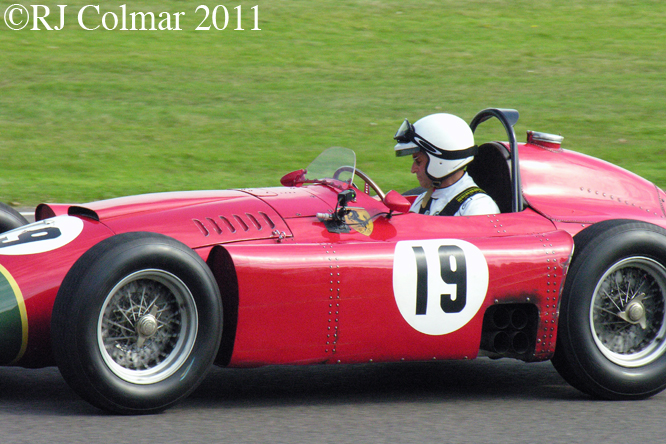
The D50’s next appeared at the 1955 Italian Grand Prix where they were entered by Ferrari for Giuseppe Farina who qualified 5th and Villoresi who qualified 8th. However Farina crashed on the Monza banking when a tyre failed and Enzo chose to withdraw the D50’s. Over the off season Ferrari developed the cars for his new signing reigning world champion Juan Manuel Fangio.
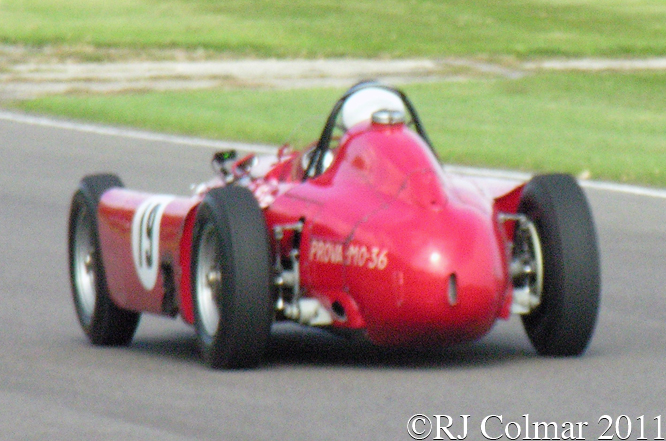
Fangio won first time out in the D50 at the 1956 Argentinian Grand Prix, but only after his car retired and he took over the car that started with Luigi Musso at the wheel, at Monaco Fangio finished 2nd again after retiring his own car and jumping in his team mate Peter Collins car.
Collins then won in Belgium and France with Fangio winning in Britain and Germany to give him an eight point lead over Collins going into the final race of the season at Monza. Fangio qualified on pole but a steering arm on his D50 broke, his team mate Musso refused to hand over his car and on learning this team mate Peter Collins did not hesitate to hand over his car, thus giving up the opportunity to win the championship which Fangio won after finishing second. Collins finished the ’56 Championship third in points behind Stirling Moss who drove for Maserati.
The following season Fangio went to Maserati with whom he won his fifth and final championship. Ferrari entered no fewer than seven D50’s for the first race of the 1957 season in Argentina which were lined up against seven Maserati 250F’s. Fangio won in his 250F the best D50 shared by Alfonso de Portago and José Froilán González which finished 5th and two laps down.
Mike Hawthorn was the last person to drive a D50 in a Championship race in the ’57 Monaco Grand Prix where 5th but retired after an accident on lap 5. Ferrari swithched it’s efforts to the Lancia V8 powered 801 for the remainder of the 1957 season.
All but two of the original D50’s were broken up, the cars seen here are both, so far as I know replica’s using some of the left over parts from the broken up cars. Six replica’s are known to have been built by Jim Stokes Workshops Ltd.
Thanks for joining me on this “Weight Distribution” edition of “Gettin a li’l psycho on tyres” I hope you will join me again tomorrow. Don’t forget to come back now !
